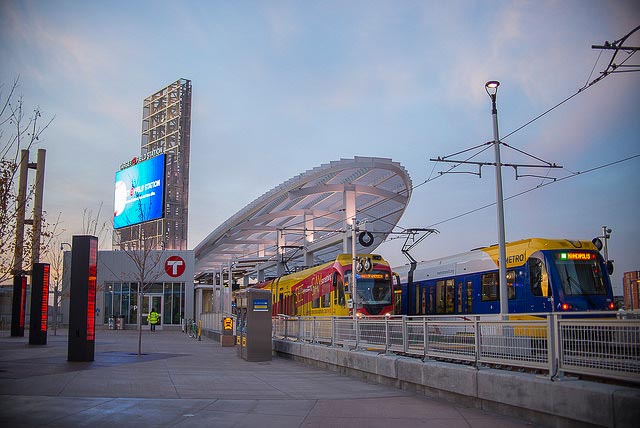Voters Tuesday approved 33 of 49 state and local ballot initiatives intended to fund transit, according to data compiled by the D.C. trade groups Center for Transportation Excellence and the American Public Transportation Association.
The votes are part of an ongoing, well-documented trend in cities across the country: in the face of uncertainty about funding from the federal government and state governments, communities are taking it upon themselves to fund public transportation.
"Voters nationwide upheld the demonstrated legacy of strong support for transit at the ballot box," said Jason Jordan, executive director of Center for Transportation Excellence, in a statement. "Clearly, communities continue to recognize the economic, social, health, and environmental benefits transit can provide and are willing to support and invest in its expansion and maintenance.”
The most high-profile win for transit advocates was Los Angeles County's Measure M, which passed with 70 percent of the vote. It authorizes an additional 0.5 percent sales tax to fund transportation, and it indefinitely extends an existing 0.5 percent sales tax that was originally set to expire in 2039. It's expected to generate an estimated $120 billion over four decades that would fund highway projects, new carpool lanes, expanded bus and rail lines and new rail tunnels.
In the Seattle-area voters approved Sound Transit 3, which increases property, sales and car taxes that would generate $54 billion over 25 years to fund light-rail, commuter-rail and bus-line expansions.
And Bay Area voters approved Measure RR, expected to generate $3.5 billion from increased property taxes. The measure will support the BART transit agency's efforts to replace and upgrade its aging infrastructure.
"The investments we make say a lot about the future we want to create," BART Board President Tom Radulovich said in a statement. "By reinvesting in BART, Bay Area voters said yes to a regional future that’s more equitable, sustainable, inclusive, connected, and prosperous."
Both the 49 Election Day ballot measures and their cumulative value, nearly $200 billion, were record-setting, according to CFTE. A total of 77 transit measures appeared on ballots throughout the year, which was also a record number for the year.
Still, though voters overwhelming supported transit, there were several big defeats.
Michigan voters narrowly defeated a 20-year, $4.6 billion regional transit plan. Among its most high-profile components was a planned commuter rail between Ann Arbor and Detroit. It also would have included a variety of new regional bus and bus rapid transit services.
In San Diego Measure A fell short of the two-thirds vote needed to take effect. The proposed half-cent sales tax would have generated $18 billion over 40 years to support trolleys, buses and carpool lanes, as well as local infrastructure projects. Sacramento's Measure B, a proposed half-cent sales tax that would have generated $3.6 billion over 30 years, also failed to cross the two-thirds threshold. Seventy percent of the funding would have gone towards roads, and 30 percent would have been spend on transit.
Though transit advocates generally hailed their success at polls and tout it as a sign that voters across the country value public transportation, their efforts face headwinds. The Republican party -- which controls the House, the Senate and Presidency -- calls for eliminating the federal transit program in its 2016 platform.
If the GOP succeeds in ending federal transit spending, the consequences would be "devastating," the American Public Transportation Association said this summer, after the platform was adopted.
Though transit agencies can generate funding locally from tax hikes, generally, they also depend on federal funding like Federal Transit Administration grants to support new projects.
According to APTA, all levels of government spent a combined $17.7 billion on capital spending on public transit in 2013. About 40 percent of that total came from the federal government.
On the other hand, there may be some home for those transit advocates. President-Elect Donald Trump has spoken positively of transit. The Washington Post quotes Trump touting the need for improved transit in his 2015 book:
Domestically, we need to undertake a massive rebuilding of our infrastructure. Too many bridges have become dangerous, our roads are decaying and full of potholes, while traffic jams are costing millions in lost income for drivers who have jobs in congested cities. Public transit is overcrowded and unreliable and our airports must be rebuilt. You go to countries like China and many others and you look at their train systems and their public transport. It’s so much better. We’re like a third-world country.
And if the presidential campaign has been any indication, Trump has clearly shown he's not beholden to his party.


